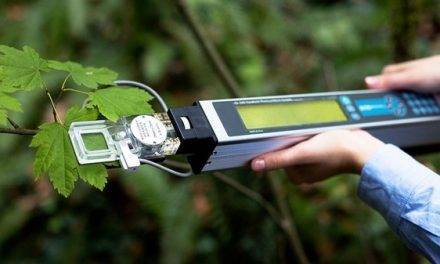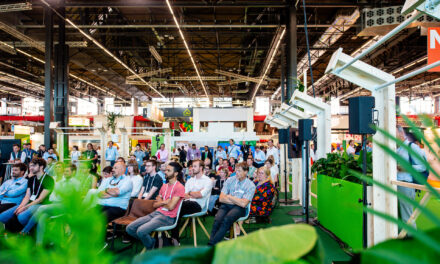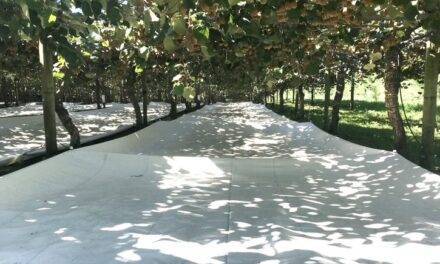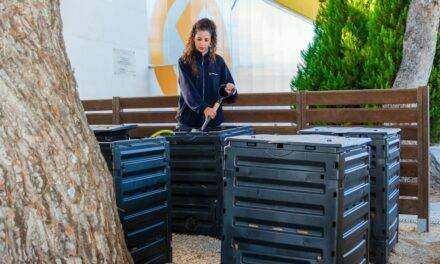
Cooperation is a key to success for all blueberry growers
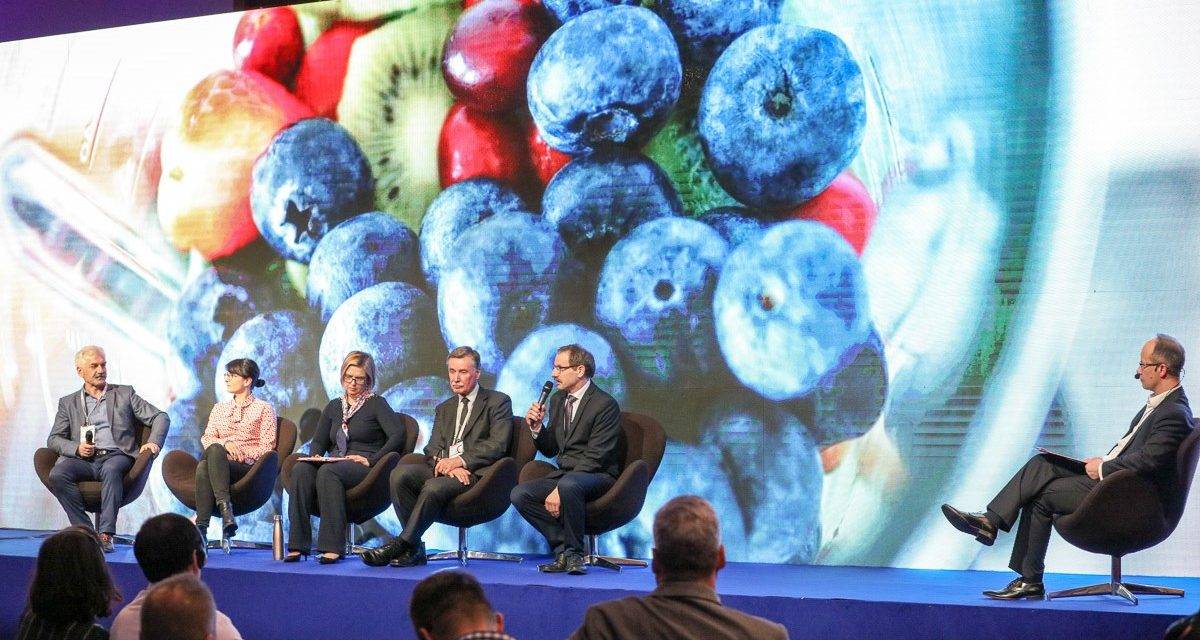
Author: Mariusz Podymniak, Polish journalist
Thanks to cooperation new ideas, creative initiatives and innovative products are created. Thanks to cooperation we meet new people and establish new relations. This cooperation in many situations is the key to further development. Cooperation was the slogan of The VII International Blueberry Conference which took place in Poland.
Delegates from 27 countries in the world and over 900 participants in total – that shows how important was the VII International Blueberry Conference. This event confirmed that blueberry producers can work together to achieve common goals. They must continue to do so – there are still many challenges in cultivating and trading blueberries.


Challenges in fruit production and others
Blueberry production is growing in various European countries. One of them is Ukraine, where, as Taras Bashtannyk from Ukrianian Berry reported, the area of blueberry cultivation increased rapidly and in the last 3 years it grew three times to the level of 2100 ha. In 2018, blueberry harvest in Ukraine amounted to 5,000. tons, and it is expected that exports will grow by about 2000-2500 tons in each subsequent year. This means that in 2020, blueberry harvest in Ukraine may exceed 10,000 tons.
Blueberry production in China is also dynamically developing. Dr Stanisław Pluta from the Institute of Horticulture in Skierniewice informed that planters began growing blueberries on a commercial scale 30 years ago. In 2001, blueberry was grown on an area of 24 ha, in 2017 it reached almost 47,000 ha and about 115,000 tones were harvested. A large part of plantations in this country are young and not fully productive. Blueberry is grown mainly in natural field conditions but new technologies are also implemented. Some blueberries are grown in high tunnels (1,315 ha) and in so-called Chinese type greenhouses (1,010 ha). it is estimated that the area of blueberry cultivation in China in 2020 will reach 70,000 ha, and the fruit production will amount to 1 million tons in 2025.
In the perspective of growing production the harvest of fruit becomes very important. Meanwhile, many countries are struggling with a shortage of employees. The mechanization of harvest is certainly a chance. In USA, the search for the optimal mechanical harvesting method is still underway Maintaining high quality of fruit is a priority at the same time. Lots of research is conducted by Fumiomi Takeda from US Department of Agriculture.
Our studies in 2018 showed that as much as 92% of blueberries harvested by rotary drum shakers and collected on soft catching surface were sorted as fresh market pack-out – says Fumiomi Takeda. Generally, fresh market pack-out percentage, fruit firmness and extent of bruise damage was slightly to moderately worse than hand-harvested fruit. New sensor technologies will enable packers to sort blueberries into different bruise categories. High fresh-market pack-out percentage achieved by our prototype blueberry harvesters in 2017 and 2018 were significant improvements over those achieved by commercial OTR harvesters.
Currently, we are redesigning the fruit catching surfaces to reduce impact damages and replacing non-food grade neoprene sheets with FDA-listed materials for use with food and appropriate as fruit catching surface. The plan is to have the rede-signed OTR harvester with rotary shakers ready for research in 2019. – informs the scientist.
The future of the blueberry market
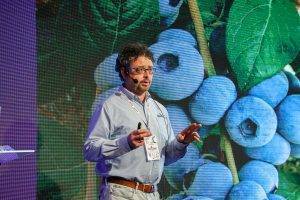
Andrea Pergher talking about new varieties
A new selection of blueberry varieties gives a chance for further development of the branch. Their features were presented by Andrea Pergher from Fall Creek Farm and Nursery Europe. Fall Creek has started the breeding program almost 20 years ago. The selections have undergone very selective comparison trials before they were released. Before becoming commercial, the variety must prove to be better than the existing varieties. Fall Creek is managing trial sites in different climatic area where we compare new releases with standard varieties. The plants are planted together at the same age for consistency in data output. For cultivation in central and northern Europe, highbush blueberry varieties belonging to the group known as high chill blueberries (long dormancy varieties) are useful. These are ‘Top Shelf’, ‘Valor’, ‘Cargo’, ‘Calypso’ and ‘Last Call’. These varieties provide high fruit quality, good taste, appearance and good post-harvest durability.
Based on the the calculations presented by Hans Liekens from Fall Creek Europe, it is justified to say that blueberry market in Europe has a chance to grow, provided that it is possible to increase consumption and penetration of the market. Great Britain, where the average citizen eats 860 g of blueberries annually, sets an example. Meanwhile, the average European citizen consumes 180 g of blueberries annually. If we could increase consumption in Europe to the level of Great Britain, an additional 500,000 t of blueberries would be needed. To achieve these goals it is necessary to provide the market with high quality, hard, firm and tasty blueberries. The most important thing is that the consumer who once buys blueberries will come back for more. When they are disappointed, because of quality issues, he will cease to be our client. We all are blueberry producers. We all need to look after quality and keep working on it – said Hans Liekens.
Practical experience
International Blueberry Conference gives its participants some practical experience as well. During the second day of the event there were pruning demonstrations and workshops dedicated to establishing blueberry plantations. They were led by Paweł Korfanty, nurseryman and enthusiast of blueberry and Leon Schrijnwerkers – a nursery worker from Netherlands. He showed how to form ‘Bluecrop’ blueberry bushes and which shoots are the most valuable, how many of them should remain in the bush to ensure good fruit quality.
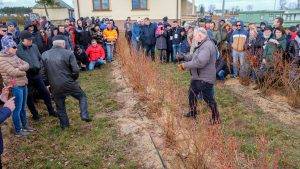
Leon_Schrijnwerkers pruning explanations
Paweł Korfanty showed how to take care of young blueberry plantations, how to conduct pruning and work with young plants in order to obtain well-yielding plantations as soon as possible. The tools used for pruning show at the blueberry plantation were provided by Bahco company.
Mariusz Padewski, a technical adviser from Fall Creek, also explained how to tend blueberry plantations. He paid attention to the selection of the right quality of nursery material, where thanks to well-propagated plants in pots, it is possible to quickly get well-yielding plantations without additional treatments.
The participants of the Blueberry Conference gained a lot of new knowledge about the cultivation of blueberries and prospects for growth. Thanks to this, they can still develop their plantations. Develop them in a good direction! Grow better to earn more. We encourage you to attend next editions.










